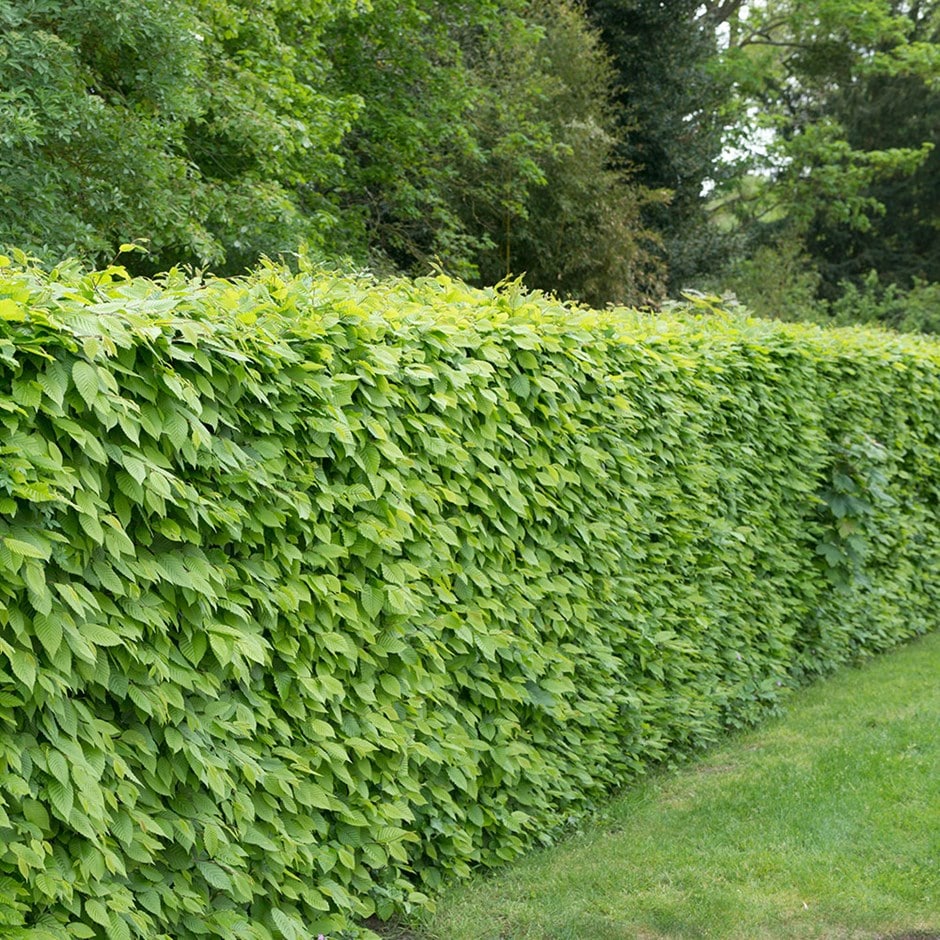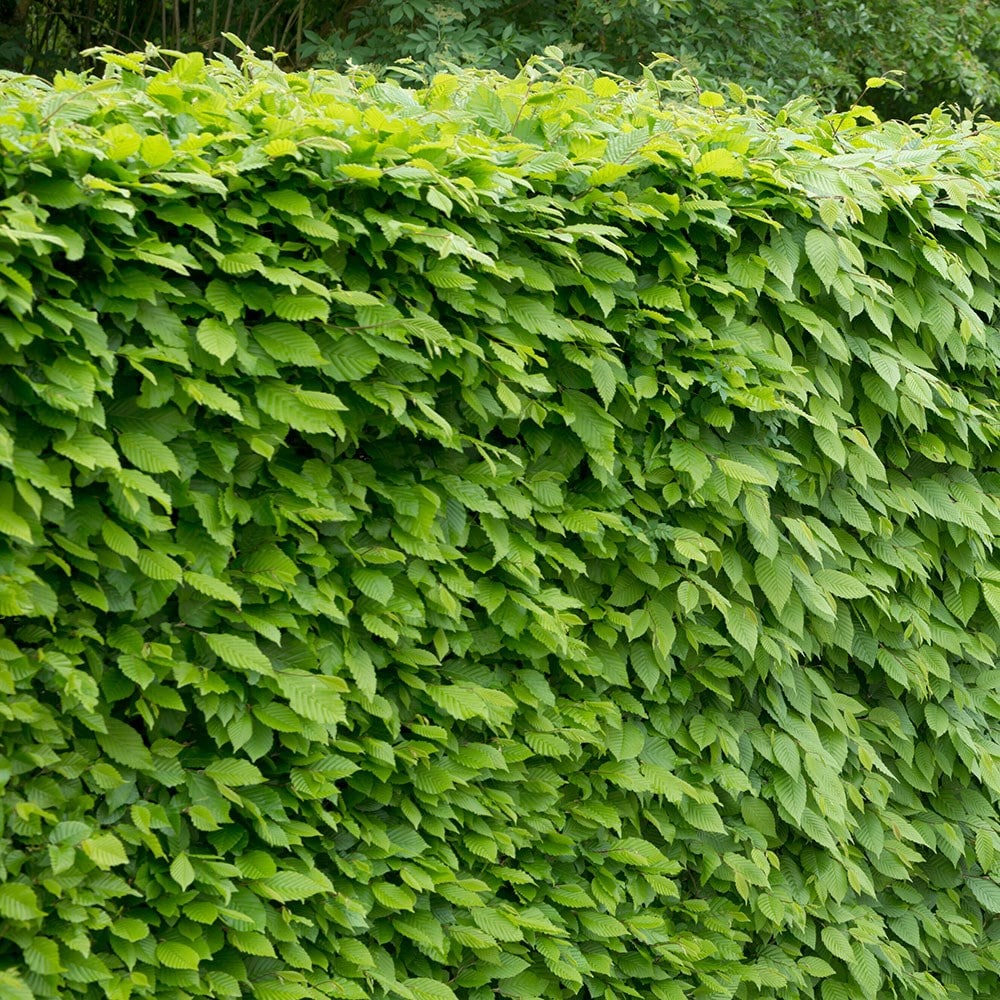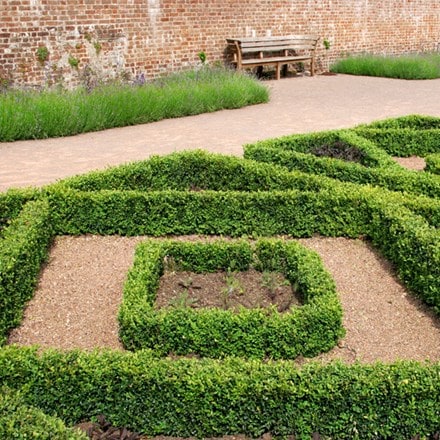Carpinus betulus - Hornbeam hedging
common hornbeam hedging
- 25 × bare root plants | 40 - 60cm tall
- £64.99
- available to order from autumn 2024
- 2 litre pot | 30cm tall
- £14.99 £16.99
- In stock (shipped within 3-5 working days)
- 10 × bare root plants | 1.0 - 1.25m tall
- £64.99
- available to order from autumn 2024
- 25 × bare root plants | 60 - 80cm tall
- £79.99
- available to order from autumn 2024
- 25 × bare root plants | 80 - 100cm tall
- £94.99
- available to order from autumn 2024
Delivery options
- Standard £5.95
- Position: Full sun or partial shade
- Soil: Moderately fertile, moist but well-drained soil
- Rate of growth: Average
- Flowering period: March
- Hardiness: Fully hardy
With vivid green catkins in March, followed by clusters of green fruit, and toothed mid-green leaves turning orange and gold in autumn, hornbeam is an excellent native tree for a large garden. Pyramidal in shape if left unclipped, it can tolerate wet, clay soils and responds well to pruning, which also makes it ideal for training as a formal hedge.
Our bare root plants offer a low cost way to create a hedge, but they only become available when fully dormant (typically from November to early April). These plants have a known seed provenance, and have been raised in a nursery bed for one year, then grown on in rich British soil. Bare root plants under 1m in height are 2 years old, while those over 1m, have had an extra year in the ground before being lifted, so will be 3 years old. Having developed a healthy, fibrous root system, the plants will be raring to root system, the plants will be raring to go by the time they reach you.
To find out more about how to plant a hedge, click here
Our bare root plants offer a low cost way to create a hedge, but they only become available when fully dormant (typically from November to early April). These plants have a known seed provenance, and have been raised in a nursery bed for one year, then grown on in rich British soil. Bare root plants under 1m in height are 2 years old, while those over 1m, have had an extra year in the ground before being lifted, so will be 3 years old. Having developed a healthy, fibrous root system, the plants will be raring to root system, the plants will be raring to go by the time they reach you.
To find out more about how to plant a hedge, click here
Bareroot plants should be planted out as soon as possible, incorporating some well-rotted garden compost or horse manure into the planting hole. Plants grown as trees require very little pruning (unless they get too large for their allotted space), however hedges should be clipped in late summer or early autumn. Apply a generous 5-7cm mulch of well-rotted garden compost or horse manure around the base of the plants in spring.


